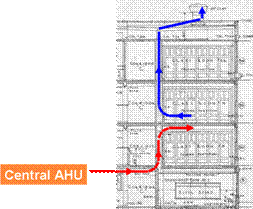Felicia Doggett
Metropolitan Acoustics, LLC
felicia@metropolitanacoustics.com
Brian M. Zigmond, P.E.
Studio JAED
zigmondb@studiojaed.com
Lay-language version of paper 4aAA4
Presented on Thursday, November 13, 2008 in Room Legends 9
156th Meeting of the Acoustical Society of America
The Philadelphia School District has a stock of over 90 schools, listed on the National Register, that were constructed between 1920 and 1940. Most of these continue in use today. With a minimum size of 50,000 square feet per building, this resource of over 5 million square feet of building area is likely to remain in use for at least another generation. The School District has adopted the policy that every one of their new and renovated schools will be LEED certified under LEED For Schools 2007. Since it is not practical to raze these buildings, what can be done to meet the LEED certification? It is surprising how “green” they are.
As a little background about these schools: they are a significant historical and cultural resource and they typically anchor the residential neighborhoods in which they reside. Their sheer numbers, in combination with the limited resources of other alternatives, makes them the most feasible option for schools in the city. These schools can be made to, and in many cases still do, meet their program needs. This is particularly important since reuse is considered the highest form of sustainability.
LEED for Schools 2007 for the most part follows the acoustical guidelines set forth in a document called ANSI S12.60-2002, Acoustic Performance Criteria, Design Requirements and Guidelines for Schools. For classrooms, the Standard addresses three main areas: Partitions between classrooms must meet a Sound Transmission Class (STC) rating of 50; the reverberation time in classrooms must be less than 0.60 seconds for rooms under 10,000 cu.ft. and 0.70 seconds for rooms between 10,000 and 20,000 cu.ft.; and a maximum background sound level of 35 dBA (decibel A-weighted scale); LEED can be up to 45 dBA. The dBA is the most commonly used single number rating that simulates human hearing.
The classrooms in the buildings are very similar in construction, consisting of large operable windows, and narrow floor plates, all utilizing very robust materials such as brick, granite, hardwood, and concrete. One other optimal design feature in these buildings is the central air distribution systems built into the core of the facility. With a little bit of fine tuning, these classrooms can meet and exceed the requirements of the ANSI Standard S12.60. Each of the three areas is detailed below.
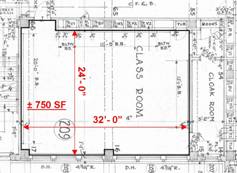

Partition Design: The partitions between classrooms in these buildings typically consist of 8” clay tile with ½” plaster on both sides. This massive construction has a minimum rating of STC-52, which exceeds the criteria. Modern construction that is widely used in schools consisting of metal studs with one layer of gypsum board on each side does not perform nearly as well as this classic construction. The floor plates between classrooms are typically 8” cast-in-place concrete, which has a rating of STC-58. Again, typical modern construction of metal deck with thin concrete and a hung ceiling is about 10 STC points less than this.
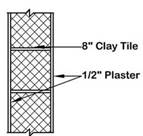
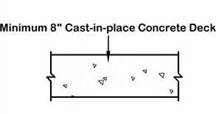
Reverberation Time: The reverberation time is defined as the time it takes for a sound to decay by 60 decibels. The calculated reverberation time in a typical classroom is 3.20 seconds with the existing conditions, which well exceeds the criteria. However, if an acoustic tile ceiling is floated in the middle of the room covering approximately 80% of the area, the calculated reverberation time drops to under 0.58 seconds, which meets the criteria. This ceiling can also be beneficial for aiding the even distribution of light from the fluorescent fixtures as well as natural light and is kept off the walls since the windows extend past the ceiling.

Background Sound Levels : Background sound levels in the typical classroom from exterior sources are generally low since, as mentioned above, most are located in residential neighborhoods with little vehicular traffic. As for background sound levels from mechanical systems, most schools of this era followed a typical layout: The central system provides tempered outdoor air to classrooms and utilized gravity relief systems. Fans are located in the basement well away from all classroom areas. Individual radiators located in each space provided individual space control with low noise.
The heavy-weight construction of the building gives a high thermal mass. This allows for a thermal “fly-wheel” effect to enhance heating and cooling of the building. With heavy-weight materials and high thermal-mass, the building will hit its solar heat gain peak later in the day, typically around 3:00-4:00 p.m., while a light-weight construction building with the same orientation will peak at approximately 10:00-11:00 a.m. The result is that the building stays cooler for a longer period in the summer time and retains more heat through the night in winter.
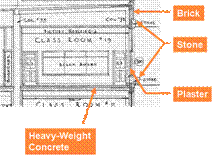

Gravity relief systems are used to relieve air from the rooms and are very quiet as there are no operational fans to create noise. Instead, the natural pressure differential from the air being delivered to the space “pushes” the relief air out. Operational windows provide natural ventilation and cooling as the high/low arrangements in large group spaces provides natural thermal drafting of the air. Large window areas on south-facing walls provide high levels of solar heating. Most operable window areas from buildings designed in the early part of the 20th century still meet today’s codes for ventilation requirements.
